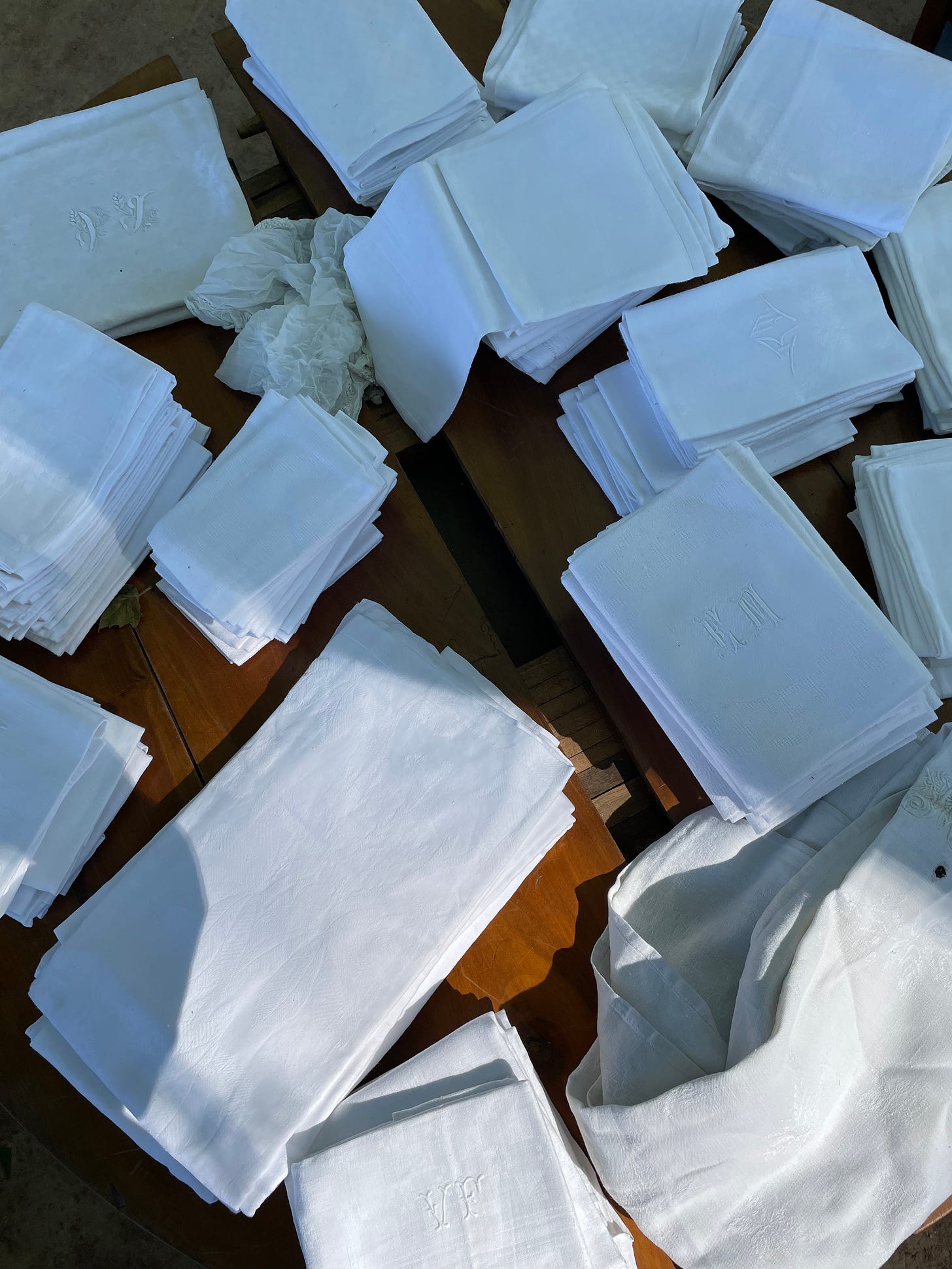Hello and welcome to this week’s edition of The Bell!
French antiques/flea markets are a passion of mine that I haven’t been able to indulge in often over the past few years, so I’m taking advantage of a few opportunities while in France.
Over the weekend I shared a blog-style “come to the brocante with me” post, with all the stuff I saw and liked and wanted to buy at the Chinon brocante.
Come to the brocante with me
Hello! My #1 favorite thing to do on summer Sundays in France is shop the local brocantes. “Bro-Kant,” a term for an outdoor flea/antiques market with professional sellers—to be distinguished from a yard sale which is called a “vide grenier,” — “empty attic.”
Today, I’m sharing my tips for shopping the brocantes, in case you have a trip to France planned this year and want to do some hunting of your own.
Choose your time of day wisely
In the morning, you’ll have the best selection. In the afternoon, you’ll get the best deals. It just depends on your priorities!
Carry cash
In my experience, very few brocante vendors take cards. That’s the trade off you get for good prices: they’re not paying transaction fees to credit card companies.
Take photos
Most vendors will be happy for you to take photos or videos, because that way, you’re more likely to remember what you saw and come back and buy something. If a vendor asks you to stop taking photos, just apologize and comply. And it never hurts to ask permission first! The phrase is: “Excusez-moi, bonjour, puis-je prendre une photo?”
Chat with the vendors
This is obviously easier if you speak French, but many of them will speak some English—they’re used to selling to tourists, especially in areas like Isle-sur-la-Sorgue or Aix-en-Provence. It always pays off to ask questions about their merchandise and let them know if you’re looking for something specific. They are usually super knowledgable about the time period something was made, what materials it’s made out of, and how you should care for it once you get it home. Or they may have a funny story about the house it came from or how it came into their possession. Get their business cards and look for the same people over and over; build relationships.
Think creatively about your purchases
Is there an ugly piece of art, but in a beautiful frame you could repurpose, or a beautiful piece of art in an ugly frame you could replace? Brocanteurs are buying pieces from estate sales and not doing much, if anything, to restore or improve the item before bringing it to you. They might be selling things that are broken, dirty, or stained—but that can be brought back to life with a little elbow grease. You, the buyer, are expected to provide the elbow grease. But like I said above, feel free to speak up and ask how you should wash or restore it.
Don’t try to haggle too much
The prices at a brocante are already quite low, for the reasons I’ve enumerated above. If you linger and look at something for a while, and appear to waver about whether or not you should buy it, the vendors will often knock off €5 - €10 on the spot. I’m not 100% certain on the etiquette here, but my gut tells me that it would be rude to try to save every last penny. These are professional dealers, and their merchandise is priced reasonably for the market.
Bring something to tote your purchases home
Some vendors may wrap small purchases in paper and/or offer you a bag to carry them in, but don’t assume that they will. People often bring rolling grocery bags or wagons for more voluminous purchases. And think about things that you don’t want touching: a piece of silver whose tarnish will stain some white linens, for example, and bring an assortment of bags to account for that.
Are you an avid antiquer? Where are your favorite places to go hunting, at home and abroad? Let me know in the comments.
Talk to you Friday with this week’s recs!
xx Jane





